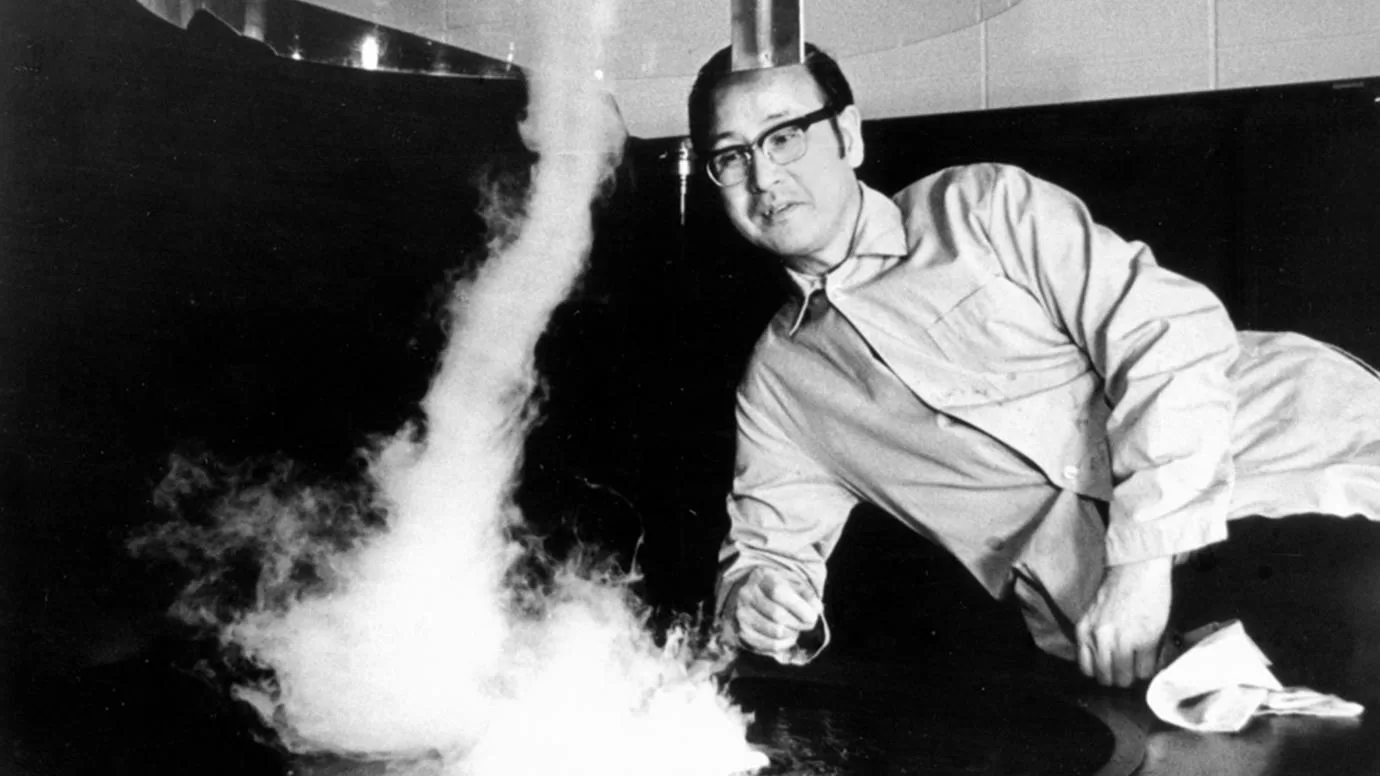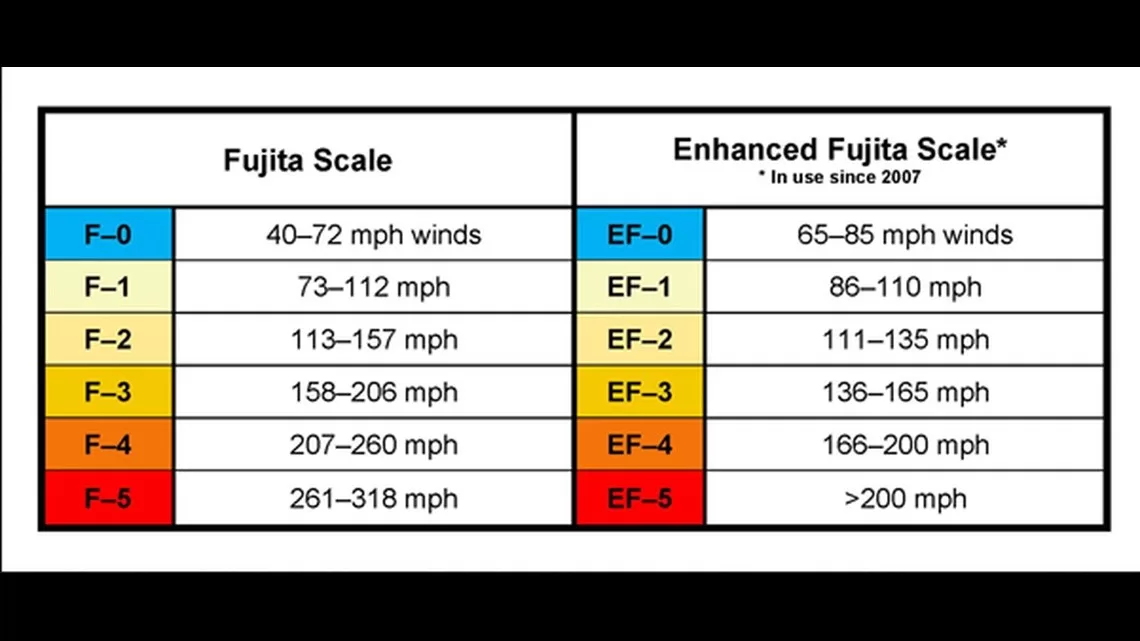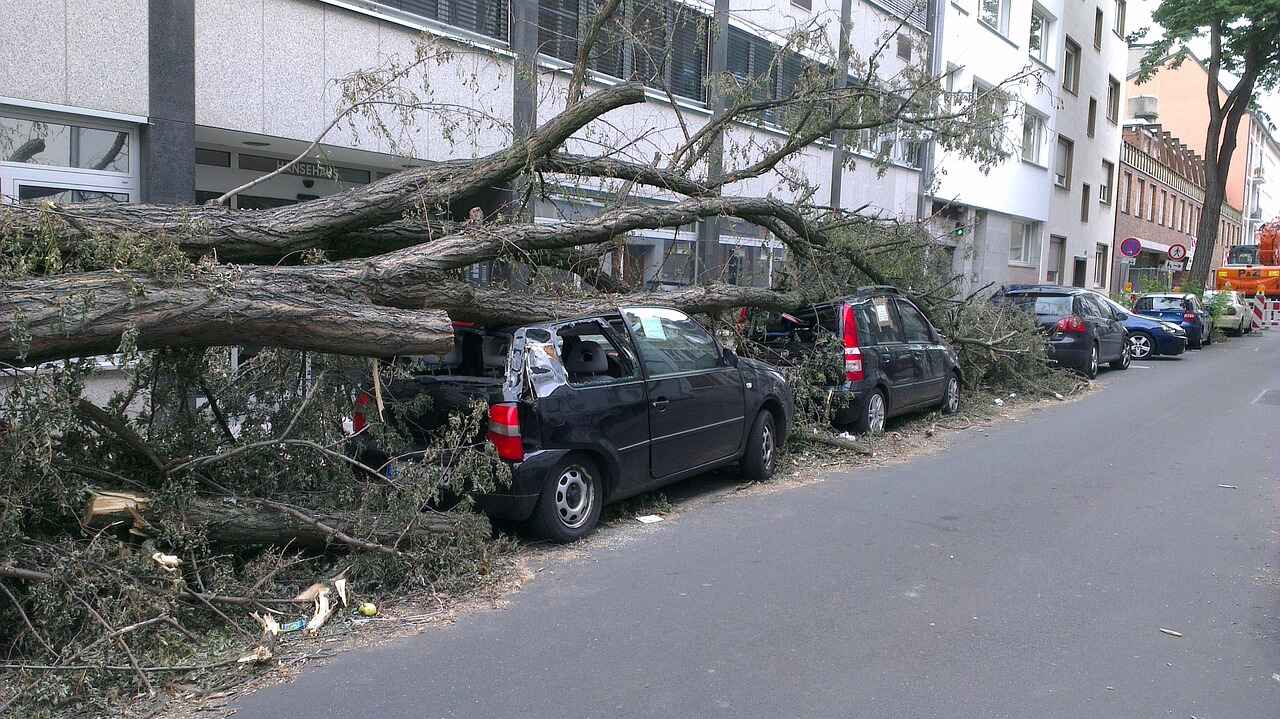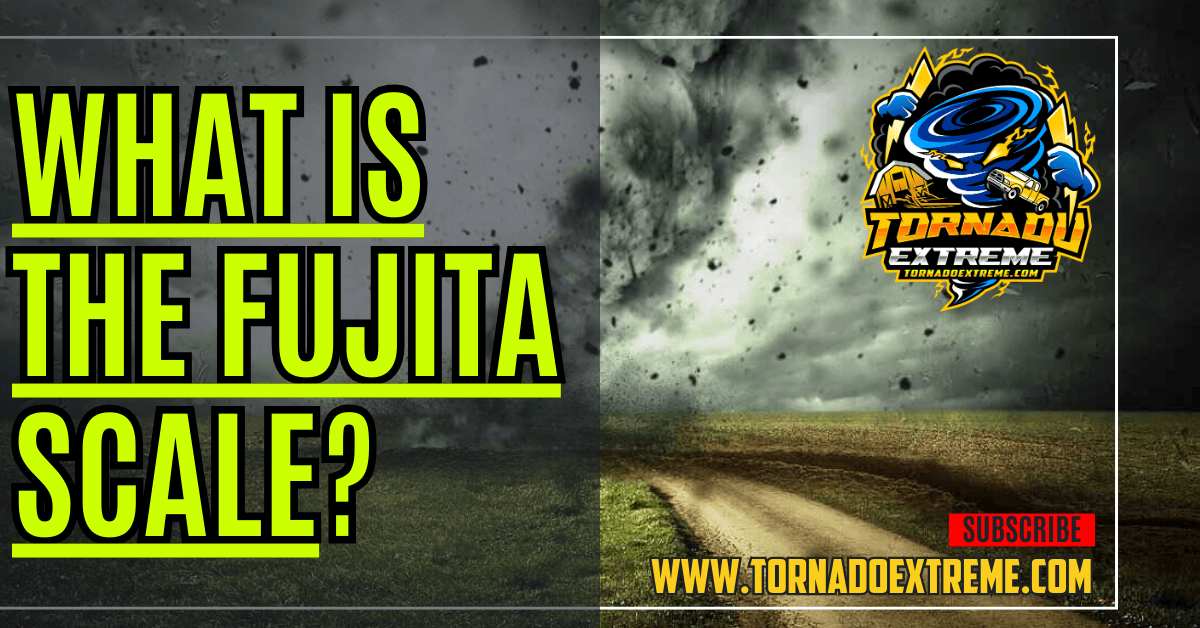A tornado is one of the most severe natural disasters. Recognizing how powerful a tornado is might help people forecast its impact and make essential safety plans. In 1971, Dr. Tetsuya Theodore Fujita developed a rating system to determine the power of a tornado using damage assessments.
This scale is referred to as the Fujita Scale or the F-scale. It sorts and categorizes twisters based on the destruction it leaves, giving scientists an idea of its strength and how much havoc it could cause. Breaking down this scale lets individuals better understand just how dangerous these storms are, and make informed decisions that will save lives and property.
How the Fujita Scale measures tornado intensity
The severity of a tornado is determined by reviewing structural and vegetation damage caused by the storm. That type of destruction is then correlated with wind speeds to figure out what classifies as strong or weak winds in relation to twisters.
The complete scale consists of six levels that stretch from F0 all the way up to F5, with each level representing different estimated wind speed ranges and their associated damage levels. For instance, an F0 has light damages like broken tree branches or minor roof problems while an F5 causes catastrophic destruction such as demolishing sturdy homes and blowing away large objects. By analyzing this information meteorologists can guess wind speeds based on damage extent and assign a proper rating under the Fujita Scale.
The history and evolution of the Fujita Scale
The Fujita Scale dates back decades ago and has been reworked several times after Drs.’ Tetsuya Theodore Fujita’s collaboration with his wife Dr. Sumiko Fujita back in 1971 when it was first introduced to standardize twister classification methods using their impact as a base point. Through several years since then, experts have been able to further improve upon it as technological advancements were made in meteorological research. These refinements lead to more accurate estimations of tornado intensity.
The original Fujita Scale was replaced by the Enhanced Fujita Scale (EF-Scale) in 2007, a rating system that takes into consideration other essential factors such as construction quality and building codes to offer more detailed and relevant data for modern infrastructure. This transformation is proof that people are continuously working towards making this scale better than it already is so that we can efficiently respond and deal with these natural occurrences.

How was the Fujita Scale created?
Tornadoes have been spotted around the world, but no place experiences them more often than mainland United States due to its geography. In the past century, there wasn’t much information known about how they were generated or how to predict them since their deadly potential rarely ever graced us with its presence.
Forecasting began taking steps forward after World War II when radar technology became used more widely, but even basic knowledge on them was hard to acquire because they hardly form with little warning and occur quite infrequently.
Professor Tetsuya “Ted” Fujita is best known as “Mr. Tornado” for his extensive research on thunderstorms and tornadoes. He had a famous obsession with categorizing things, and that didn’t skip out on tornadoes. In 1971 in his publication, “Proposed Characterization of Tornadoes and Hurricanes by Area and Intensity,” he introduced us to the scale we all know today: the F Scale.
The idea was simple enough; assess the damage on a scale from 0 to 5. Using numerous survey measurements of ground and aerial surveys and the Beaufort Wind Scale, Fujita related wind speed with resulting damage.
So for example, if you have a tornado with winds blowing at an estimated 207-260 miles per hour range that results in severe destruction it would be put as an F4 on his scale. He described its impact as follows: “Entire frame houses flattened, with debris blown away; steel-reinforced concrete structures severely damaged; trees debarked by small missiles; cars thrown considerable distances; large missiles generated.”
The F Scale quickly caught on in the meteorology field, but what we use today has been modified since then.
Thanks to this tool meteorologists are able to more accurately gauge how strong a storm might be and therefore warn people better so they can prepare themselves accordingly whether it’s seeking shelter or relocating temporarily. The F Scale has saved countless lives since its creation, but what else has it done?
F2 tornadoes can be deadly. They are strong enough to push over cars and mobile homes, and snap large trees in half. According to the Fujita scale, wind speeds for F2 tornadoes range from 113–157 mph. The path width is typically 56–175 yards.
See also: Which State Has the Most Tornadoes and Why It Matters
Pronunciation of the Fujita Scale
Before we dive into the details, let’s address the pronunciation of the Fujita scale. Think of Mount Fuji, the highest mountain in Japan. With that in mind, the IPA pronunciation of the Fujita scale would be “fuˈʤitə skeɪl”.

Fujita Scale Definition
The Fujita scale is a system used to gauge the strength and effects of a tornado on man-made structures and vegetation in affected areas. Created by Dr. Ted Fujita in the 1970s, this scale has five main grades (F1-F5) that allow meteorologists to classify tornadoes according to their destructive potential.
Meteorologists employ various methods such as weather radars, satellite images, historical meteorological data, ground-swirl patterns, and analysis of the area’s landscape to try and predict how destructive a twister can be. They also take into account their past experiences with similar tornadoes when categorizing an event.
After a tornado occurs, reports from media outlets and eyewitnesses are utilized by meteorologists to gather data for determining what category (F1-F5) on the Fujita scale the tornado belongs to.
Now let’s go through each of the categories on the Fujita scale:
F0 Tornado
An F0 tornado is one that causes no or little damage. These will not cause much harm to human-built items or natural surroundings
F1 Tornado
F1 tornadoes can cause moderate damage to human-built objects and natural environments. Some examples include pushing vehicles off the road and removing surface material from roofs. The wind speeds range from 73 mph to 112 mph (117 km/h – 180 km/h), with diameters generally being between six yards (five meters) and 17 yards (16 meters).
F2 Tornado
Here we get more significant damage occurring. F2 twisters have enough power to blow over cars and mobile homes while snapping large trees in half simultaneously. The wind speeds as per Dr.Fujitas’ scale range from 113 mph -157 mph(181km/h-253km/h), putting them at widths ranging from 56 yards(51 meters) wide -175 yards(160 meters) wide.
F3 Tornado
These tornadoes cause severe damage to property and vegetation. For example, walls and roofs can be torn off, cars and trains overturned, and extensive destruction inflicted. The wind speeds range from 158 mph-206 mph (254 km/h -332 km/h), leaving it at diameters of 176 yards(161 meters) to 566 yards(518 meters).
F4 Tornado
Devastation is the name of the game here. F4 twisters have enough power to break down homes and lift cars off the ground. The strength in these storms often leads to multiple fatalities. With wind speeds ranging from 207 mph-260 mph (333km/h – 418km/h) and diameters ranging between .3 miles (.5 kilometers) / .9 miles(1.5 kilometers).
F5 Tornado
The highest grade on the Fujita scale is an F5 tornado. These truly wreck everything in their path causing incredible damage to property and vegetation while frequently having a high death tolls attached as well.. F5 twisters will be capable of lifting houses entirely off their foundations while carrying cars several miles away with ease.Wind speeds typically reach 261mph-318mph (442km/h -512km/h), stretching out over paths that run from one mile(.6kilometers)- three miles (five kilometers ) wide.

Understanding the different tornado intensity levels
Each step up on the Fujita scale of tornado intensity represents an increase in wind speed and subsequent damage. F0 twisters, for example, have winds of 65-85 mph and cause only minimal damage such as breaking tree limbs or damaging chimneys.
As you move up the scale, storms become more dangerous: F1 shows wind speeds of 86-110 mph and can begin to peel roofs off homes; F2 has 111-135 mph wind speeds that will lift whole roofs if they’re not well secured;
F3 twisters, with winds of 136-165 mph, are capable of causing the collapse of even well-built houses and uprooting large trees. F4 storms (166-200 mph) level strong-framed houses and blow cars and other heavy objects through the air. And lastly — F5 twisters have winds greater than 200 mph and can debark healthy trees.
Knowing these levels is crucial when it comes to assessing potential tornado impact and being prepared.
See also: What is a Waterspout Tornado?
Examples of tornadoes at different Fujita Scale levels
To show the various intensity levels of tornadoes, let’s take a look at breakdowns of past tornadoes that were categorized using the Fujita Scale. The Bridge Creek-Moore twister from 1999 was an F5 storm in Oklahoma and it was very bad. It went over 260 mph.
There was tons of wide-spread destruction, including entire homes and other buildings being wiped out. Many people also died when this happened which is obviously terrible. On the other hand, we have examples like Atlanta in 2008 with an EF2 rating.
It only had wind speeds of about 111-135 mph. The damage reported here mostly affected roofs and trees but no casualties were reported. Reviewing these real-life situations will ideally help us to better rate how intense a tornado is by checking its impact on random things around it rather than building some crazy machine that actually goes into a storm risking everyone’s lives just to see how hard it is really blowing outside.
Recent history
The Bridge Creek-Moore tornado in Oklahoma during May 1999 was categorized as F5 on the Fujita Scale.
This tornado was a monster, destroying everything in its path. Tragically, many people lost their lives and many homes and buildings were reduced to rubble. In comparison, the Atlanta EF2 tornado of 2008 showed how less severe but still powerful twisters can cause damage. At wind speeds of between 111 mph and 135 mph, the storm ripped off roofs and downed trees, but there were no reported fatalities from it.
These real-world examples underscore the importance of accurately gauging the intensity of a twister — which is correlated with its wind speed — when considering its impact on communities and infrastructure.
The impact of tornado intensity on communities
The extent of the destruction that results from a tornado depends heavily on its intensity. So too does the danger that people face from injury or death, as well as the length of time it takes for an affected community to rebuild after such a disaster.
Tornadoes at higher end of the Fujita Scale — such as F4s and F5s — tend to have catastrophic consequences that can be felt for years afterward.
High-intensity twisters also knock out critical infrastructure like power lines, water systems and roads or railways, worsening problems caused by these already devastating storms. By contrast, lower-end twisters (F0s or F1s), while less destructive overall, still pose risks to people’s safety and property.
Knowing about these impacts helps emergency planners figure out how quickly they need to respond to save lives and get people back on their feet again after a storm passes.

Safety measures based on Fujita Scale ratings
Which defensive actions should be taken depends upon what kind of whirlwind is expected in an area. Residents should become familiar with safety measures appropriate for different kinds of threats so that they know how best protect themselves if dangerous weather comes their way.
For example: It’s always important to have an emergency plan in place before any natural disasters strike, including clear communication channels and designated shelter areas. But if your town is located in a region that sees many high-intensity twisters, you’ll also want to build structures that can withstand their stronger winds — and to install systems that will give people enough warning to actually use those shelters in time.
People who live in places prone to these storms but where they mostly keep human lives and property safe should still know how to hunker down for less intense twisters. And when it comes time for them or any other twister, remember: The safest place to be during a tornado is in the interior of a building or underground.
Differences in wind speed classifications between the original Fujita scale and the EF-Scale can be identified, particularly within the F5 category. The original Fujita scale considered F5 tornadoes to have wind speeds ranging from 261 to 318 miles per hour, while the EF-Scale simply designates all tornadoes with winds greater than 200 miles per hour as EF5.
See also: Green Sky Tornado: Why Does the Sky Turn Green?
Is There an F6 Tornado Category?
It’s a topic of discussion within the meteorological community, even with the new scale. Some folks wonder if there are F6 tornadoes. None have happened — yet — but if they did… it wouldn’t be pretty. Cars would turn into missiles and fly high in the air for miles upon miles, at acceleration we can’t fathom.
Safety measures based on Fujita scale
Which defensive actions should be taken depends upon what kind of whirlwind is expected in an area. Residents should become familiar with safety measures appropriate for different kinds of threats so that they know how best protect themselves if dangerous weather comes their way.
For example: It’s always important to have an emergency plan in place before any natural disasters strike, including clear communication channels and designated shelter areas. But if your town is located in a region that sees many high-intensity twisters, you’ll also want to build structures that can withstand their stronger winds — and to install systems that will give people enough warning to actually use those shelters in time.
People who live in places prone to these storms but where they mostly keep human lives and property safe should still know how to hunker down for less intense twisters. And when it comes time for them or any other twister, remember: The safest place to be during a tornado is in the interior of a building or underground.
Differences in wind speed classifications between the original Fujita scale and the EF-Scale can be identified, particularly within the F5 category. The original Fujita scale considered F5 tornadoes to have wind speeds ranging from 261 to 318 miles per hour, while the EF-Scale simply designates all tornadoes with winds greater than 200 miles per hour as EF5.
The future of measuring tornado intensity
As technology continues to advance and scientific understanding increases, so too will our ability to measure tornado intensity. Researchers are currently working on several new techniques for assessing how severe a storm is. These include the use of remote sensing technologies and advanced modeling techniques for improving accuracy in evaluating storms.
Real-time data from weather satellites and ground-based sensors also has potential for more detailed evaluations of an approaching storm’s strength. This wealth of information could help inform emergency response efforts and further empower communities to adequately prepare for these natural disasters.
EF Scale EF5 Tornado Example
Tornadoes falling under the umbrella of an EF5 on the Enhanced Fujita Scale are known for their destructive power with winds over 200 mph being capable of causing severe damage or total destruction to large structures. They can easily lift or carry large vehicles over long distances or crush them altogether.
In the final analysis, the Fujita Scale, AKA the Fujita tornado scale, is an essential device. It can be used to identify different strengths of this natural disaster. And by extension, analyze their potential for damage. This system has provided valuable insights over time and will continue to help us plan for emergencies.
As we move forward, it’s important that individuals understand what these levels mean in terms of wind speed and destruction. With enough knowledge, communities might eventually be able to make informed decisions regarding how to prepare for a storm like this.
As time goes on and technology develops more precise measurements, forecasting will become easier as well. Allowing society to act smarter and respond quicker when a potentially dangerous situation is looming overhead.
So whether you’re a weatherman or just someone with a newfound interest in tornadoes; there’s never been a better time than now to learn about them.
Chapman, Kansas
A prime example of an EF5 tornado on the Fujita scale is one that occurred in Chapman, Kansas in 2016. It lasted four days and caused extensive damage throughout its path — flipping cars, buses, and heavy machinery; leveling houses; uprooting numerous trees.
Remarkably, no fatalities were reported largely due to adequate warnings issued by meteorological services ahead of time.
Conclusion
To bring things together, the Fujita Scale, also known as the Fujita tornado scale, serves as a tool of importance when trying to understand intensity levels pertaining to tornadoes while also assessing how much potential danger they present.
Since its inception in history up until this day where it still gets revised, this scale has given valuable information about just how strong a tornado can get ultimately aiding in safety measures and emergency planning for communities under threat of these natural disasters.
By understanding the varying degrees of the Fujita Scale and their connected destruction and wind speed, individuals and communities can make smart choices to dampen the blow of tornadoes. The more technology continues to evolve, the more our ability to measure tornado intensity will improve as well.
This subsequently means we’ll have a better grip on predicting and reacting to tornado events in general. If we can crack the code that is the Fujita Scale then we are surely bound for enhanced resiliency towards these forces of nature!

